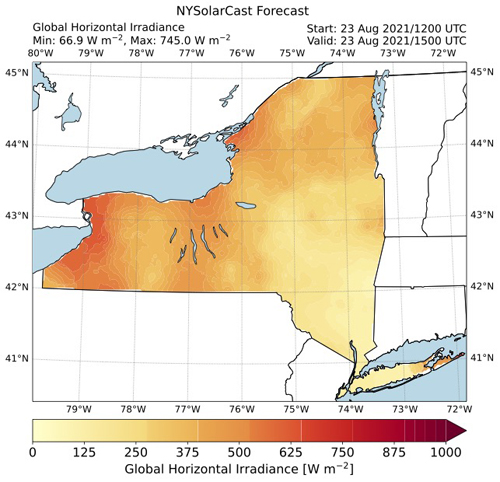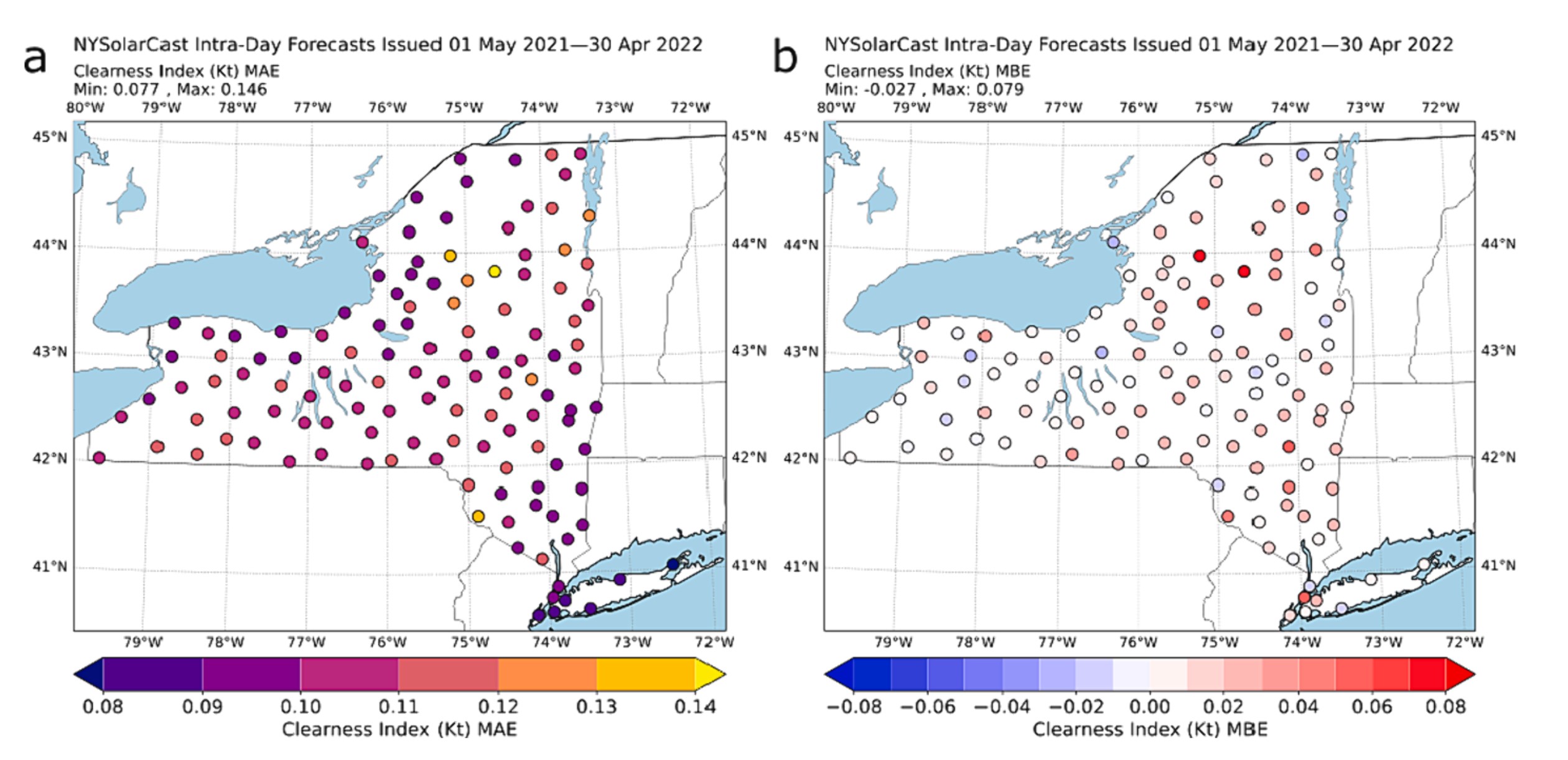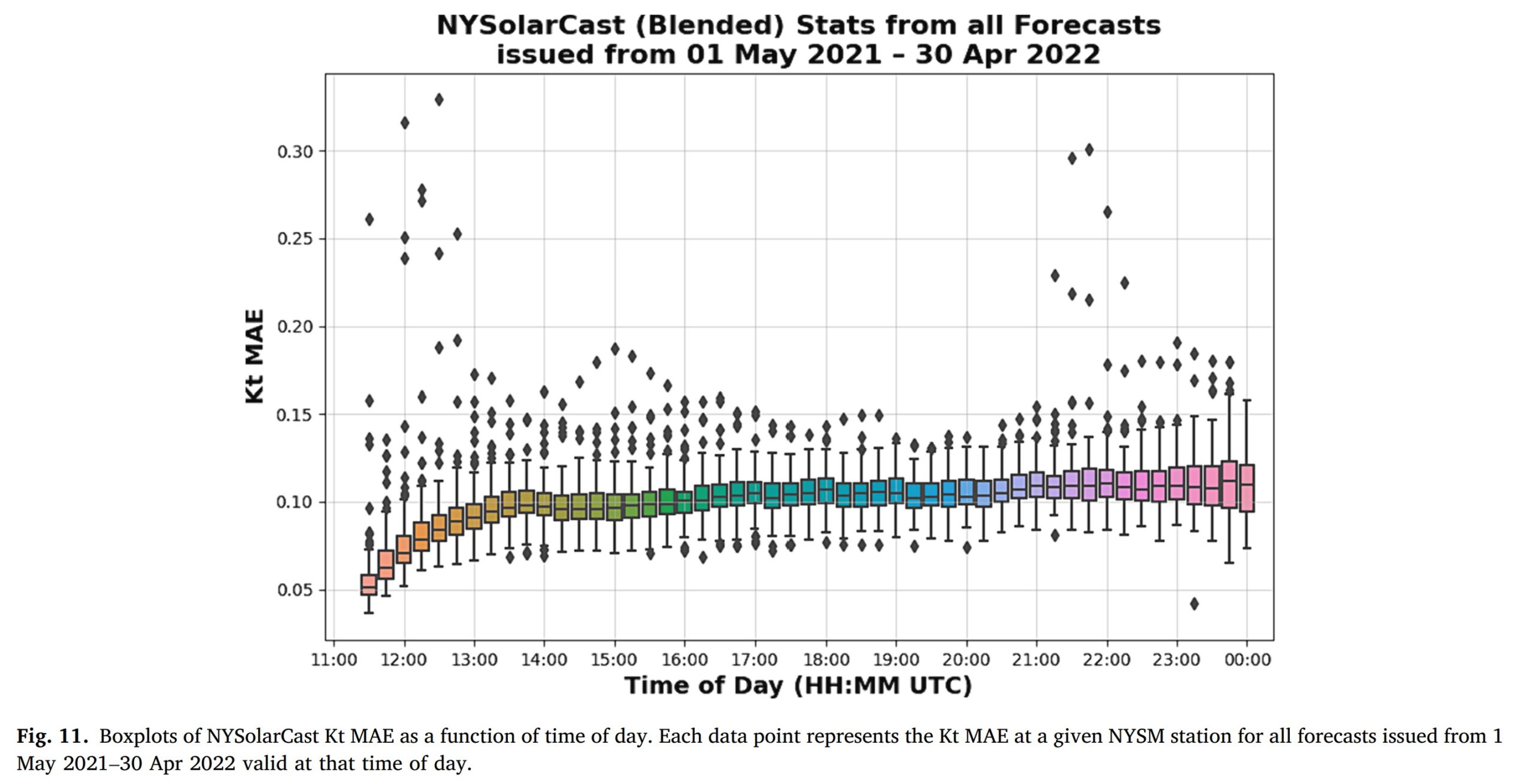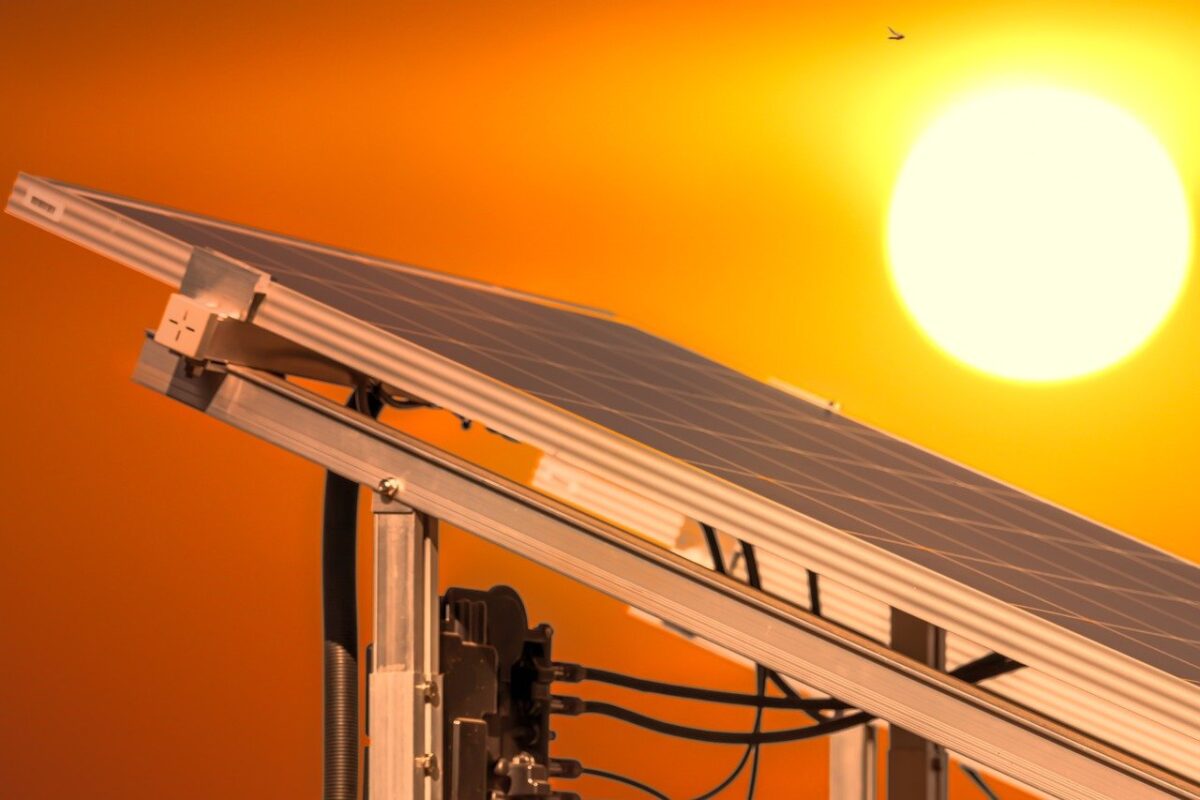From pv magazine USA
Researchers have discovered that NYSolarCast, New York state’s dedicated tool for solar generation forecasts, is often more accurate in predicting PV generation than existing tools, and is also updated more frequently – every 15 minutes. The study, “NYSolarCast: A Solar Power Forecasting System for New York State,” shows the tool’s proficiency in forecasting global horizontal irradiance (GHI) using data from various locations in the state, often outshining its commercial counterparts.
The New York Independent System Operator (ISO) region, exclusive to the Empire State, employs five-minute wholesale electricity settling periods, segmenting electricity sales into five-minute intervals for efficient grid distribution. With natural fluctuation from wind and solar energy, plus the addition of substantial and rapidly responsive energy storage systems, the utility of frequently updated electricity generation projections cannot be overstated. This step mirrors global advancements in energy management, similar to the significant industry shift witnessed when Australia commenced its transition to five-minute settlements.

NYSolarCast, developed by researchers from the National Center for Atmospheric Research (NCAR) in 2021, was tailored to help New York state manage its expanding solar power infrastructure. The tool’s forecasts of GHI, which is an indicator of potential electricity production from solar plants, are updated every 15 minutes at select solar farms and on an hourly basis for each zip code.
The tool’s predictive accuracy is honed by training on a plethora of data streams. This includes three years of real-world data from 10 utility-scale solar power plants and 490 distributed solar sites, paired with the corresponding weather conditions when available. These data points are further enriched by weather information from New York state’s expansive network of 126 NYS Mesonet stations.
NYSolarCast aligns its forecasts with the data from Mesonet weather stations, shown below:

The NYS Mesonet is a comprehensive network of 126 surface weather stations that deliver “real-time averaged observations at a temporal resolution of five minutes.” These stations, spaced approximately 19 miles apart, ensure at least one station per county across all 62 counties and the five boroughs of New York City. They monitor and transmit data on a variety of atmospheric parameters, including temperature, humidity, atmospheric pressure, GHI, wind velocity and direction, and precipitation.
Popular content
The research team notes that while NYSolarCast is open source and therefore freely accessible and usable by all, it may serve best as a framework rather than direct code application. This is attributed to the distinct weather input features of New York state, which vary greatly from region to region, each necessitating tailored tools and resources.
The source code of the tool is available for download on GitHub.
When analyzing the data, the authors conducted tests to determine the importance of various predictors (factors that influence the accuracy of their solar generation forecasts). They discovered that certain key pieces of data, such as weather conditions or solar irradiance levels, were only relevant for a short period, around 45 minutes before conditions changed.
The authors observed that prediction errors varied throughout the day, with a noticeable increase in the late afternoon to evening hours. They attributed this rise in inaccuracies to the data becoming less current as the day progresses. While this time frame doesn’t align with the peak solar generation period of 10 a.m. to 2 p.m., the evening hours are often marked by higher electricity costs on the grid, making accurate predictions especially valuable.

Throughout a one-year validation period, wherein forecasts “were produced and delivered on a quasi-operational schedule,” the findings presented a complex and nuanced picture. Despite revealing various potential areas for improvement, the core results of the study remained clear. NYSolarCast GHI forecasts overall out-performed both smart persistence and the NWP blended forecast of hourly-issued WRF-Solar and HRRR models at all intra-day (out to six hours) lead and valid times.
Furthermore, the forecasts made by NYSolarCast were “nearly always better” than those derived from tools situated precisely at the weather stations. This is likely because the tool could analyze real-time data straight from active solar farms, unlike weather stations, which had limited access to real-time data.
One potential area for improvement identified by the researchers is the integration of real-time data from the utility-scale solar facility pyranometers, which measure the intensity of solar radiation. Although this data contributed to the validation process, its inclusion in the predictive phase was hindered by the delay in data accessibility.
This content is protected by copyright and may not be reused. If you want to cooperate with us and would like to reuse some of our content, please contact: editors@pv-magazine.com.


By submitting this form you agree to pv magazine using your data for the purposes of publishing your comment.
Your personal data will only be disclosed or otherwise transmitted to third parties for the purposes of spam filtering or if this is necessary for technical maintenance of the website. Any other transfer to third parties will not take place unless this is justified on the basis of applicable data protection regulations or if pv magazine is legally obliged to do so.
You may revoke this consent at any time with effect for the future, in which case your personal data will be deleted immediately. Otherwise, your data will be deleted if pv magazine has processed your request or the purpose of data storage is fulfilled.
Further information on data privacy can be found in our Data Protection Policy.